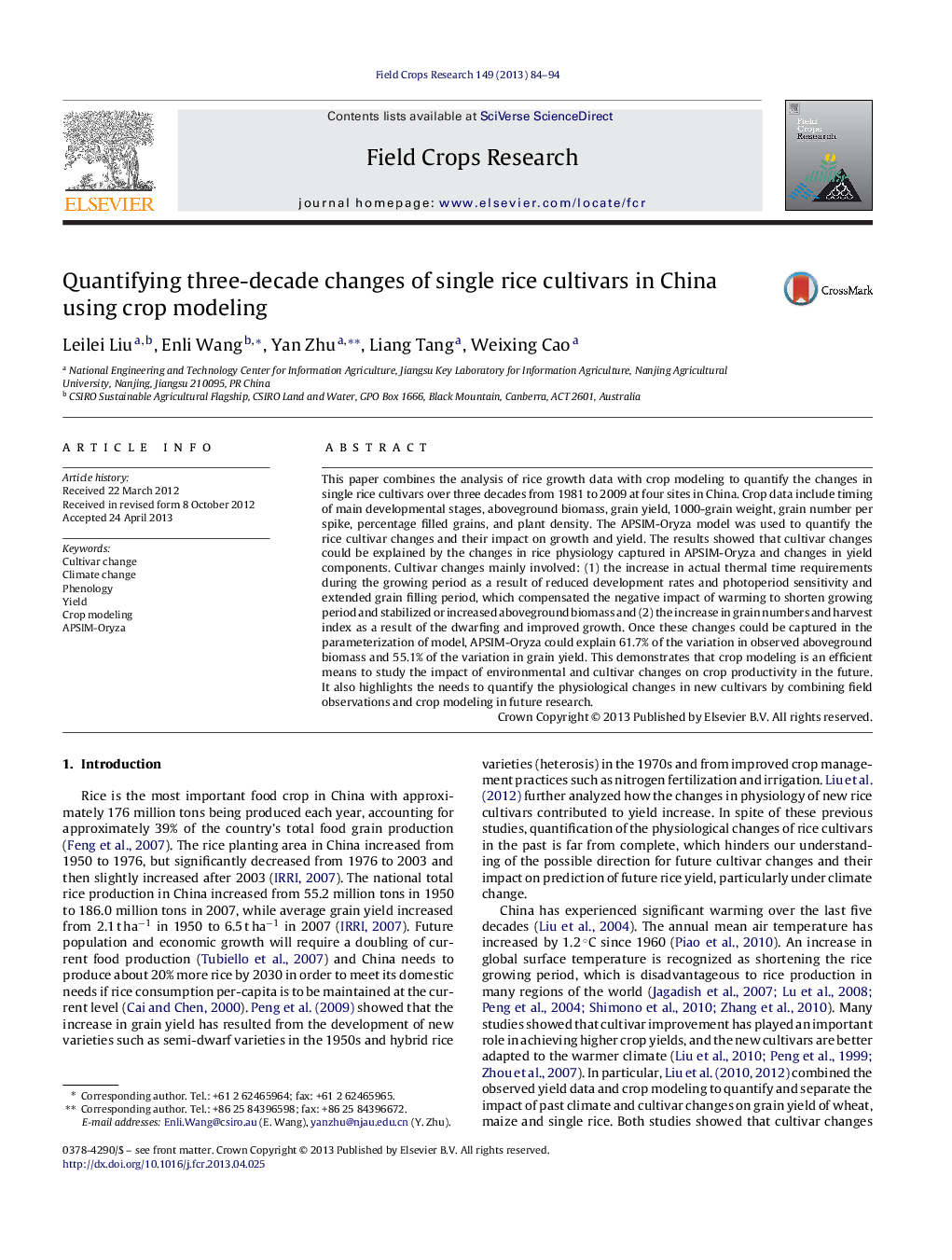| Article ID | Journal | Published Year | Pages | File Type |
|---|---|---|---|---|
| 6375241 | Field Crops Research | 2013 | 11 Pages |
Abstract
This paper combines the analysis of rice growth data with crop modeling to quantify the changes in single rice cultivars over three decades from 1981 to 2009 at four sites in China. Crop data include timing of main developmental stages, aboveground biomass, grain yield, 1000-grain weight, grain number per spike, percentage filled grains, and plant density. The APSIM-Oryza model was used to quantify the rice cultivar changes and their impact on growth and yield. The results showed that cultivar changes could be explained by the changes in rice physiology captured in APSIM-Oryza and changes in yield components. Cultivar changes mainly involved: (1) the increase in actual thermal time requirements during the growing period as a result of reduced development rates and photoperiod sensitivity and extended grain filling period, which compensated the negative impact of warming to shorten growing period and stabilized or increased aboveground biomass and (2) the increase in grain numbers and harvest index as a result of the dwarfing and improved growth. Once these changes could be captured in the parameterization of model, APSIM-Oryza could explain 61.7% of the variation in observed aboveground biomass and 55.1% of the variation in grain yield. This demonstrates that crop modeling is an efficient means to study the impact of environmental and cultivar changes on crop productivity in the future. It also highlights the needs to quantify the physiological changes in new cultivars by combining field observations and crop modeling in future research.
Related Topics
Life Sciences
Agricultural and Biological Sciences
Agronomy and Crop Science
Authors
Leilei Liu, Enli Wang, Yan Zhu, Liang Tang, Weixing Cao,
